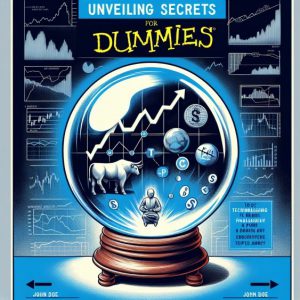
Feb 23, 2024
The Art of Investing: Conquer the Investment Cycle like a Prodigy!
Introduction
Investment cycles refer to the recurring patterns observed in financial markets over time. These cycles involve phases, such as boom, peak, decline, and trough, which repeat at varying intervals. Understanding these cycles is crucial for investors seeking to maximize their returns while minimizing risks. Savvy investors can anticipate market shifts and adjust their strategies by analysing historical trends and identifying key indicators. Whether riding the rollercoaster of high growth potential during boom periods or navigating downturns, successful investing involves staying attuned to the ebbs and flows of the investment cycle.
Understanding the Investment Cycle
The investment cycle is a recurring pattern in the stock market that governs economic growth, recession, and recovery. It consists of four phases: expansion (boom), peak (bubble), contraction (crash), and trough (depression). Each stage presents opportunities and risks for investors, requiring them to adapt their strategies accordingly.
Today, we delve into the world of mastering the investment cycle, exploring the expert views of three prominent figures in finance: Warren Buffett, Ray Dalio, and Steve Nison. Their insights shed light on navigating booms and busts, deciphering market signals, and harnessing the power of mass psychology, contrarian investing, and technical analysis.
The Art of Spotting Bubbles – Warren Buffet’s Perspective
Warren Buffet, widely regarded as one of the most successful investors of our time, has often spoken about his ability to recognize bubbles before they burst. According to him, bubbles occur when investors lose touch with reality and become overconfident in their beliefs. They ignore fundamental factors like price-to-earnings ratio, dividend yield, and cash flow in favour of speculation and momentum.
Buffet advises investors to be skeptical of trends that defy logic and history. He recommends avoiding sectors that exhibit irrational exuberance, such as cryptocurrencies, initial coin offerings (ICOs), and meme stocks. Instead, he suggests focusing on companies with solid fundamentals, sustainable business models, and competitive advantages. These businesses perform well during both boom and bust cycles because they have solid foundations built on customer loyalty, brand reputation, and operational efficiency.
Contrarian Strategies for Navigating Crashes – Ray Dalio’s Insight
Ray Dalio, founder of Bridgewater Associates, advocates for a contrarian approach to investing during crashes. Contrarians believe that popular opinion is usually wrong and seek opportunities where others see only risks. During times of crisis, Dalio suggests taking advantage of panic selling to buy undervalued assets. He recommends diversifying investments across asset classes, industries, and geographies to mitigate losses and preserve capital.
Dalio also emphasizes the importance of understanding systemic risks, such as credit defaults, debt accumulations, and currency fluctuations. He argues that these risks have cyclical patterns that repeat themselves throughout history. By recognizing these patterns, investors can prepare for future crises and position themselves accordingly.
Techniques for Reading Price Action – Steve Nison’s Insights
Steve Nison, the father of Western Candlestick Charting, is a leading authority in technical analysis. His techniques involve reading price action using candlestick charts, a graph that displays open, high, low, and close prices for security in a compact format.
According to Nison, candlestick charts reveal hidden information about investor sentiment, trend direction, and potential reversals. By interpreting the patterns and shapes of candlesticks, traders can identify buying and selling opportunities and manage risk more effectively.
Some common candlestick patterns that Nison teaches include Doji, Hammer, Shooting Star, Spinning Top, Engulfing Pattern, and Three White Soldiers. Each pattern signifies a unique event or signal, such as indecision, exhaustion, continuation, confirmation, or reversal.
To build a comprehensive trading strategy, Nison recommends using candlestick charts alongside other technical tools, such as moving averages, oscillators, and chart patterns. He advises being cautious of false signals, especially during periods of high volatility, and always confirming chart patterns with fundamental data before making decisions.
Investment Cycle Titans: Mastering Market Highs and Lows
Here are some real-world examples that highlight how these experts implemented their strategies during different stages of the investment cycle:
Example 1: Warren Buffett’s Bubble Recognition Skills
Warren Buffett’s bubble recognition skills were tested during the dot-com boom of the late 1990s. Many investors flocked to technology stocks, believing the Internet would revolutionize the global economy. However, Buffett saw through the hype and warned against investing in overvalued tech companies.
One example of Buffett’s bubble recognition was his decision to avoid investing in Amazon.com (AMZN) during its early days. In 1997, Jeff Bezos, the founder of Amazon, pitched Buffett on the company’s prospects, but Buffett declined due to concerns about the company’s lack of profits and uncertain business model. Many analysts criticized Buffett’s decision at the time, but today, AMZN is one of the world’s largest and most profitable companies.
However, Buffett’s cautionary stance paid off in the long run. After the dot-com crash in 2000, many overhyped tech stocks plummeted, wiping out billions of dollars in value. Buffett’s conservative approach allowed him to weather the storm and emerge more robust than ever.
Ray Dalio’s Contrarian Approach to Crashes
Ray Dalio’s contrarian approach to investing was evident during the Global Financial Crisis (GFC) of 2008. When Lehman Brothers filed for bankruptcy, many investors panicked and sold their assets en masse. However, Dalio saw an opportunity to buy undervalued securities at bargain prices.
According to Dalio, his firm, Bridgewater Associates, made significant gains during the GFC by implementing a contrarian strategy. They invested heavily in Treasury bonds, gold, and commodities, betting that these assets would rise as inflation increased. Additionally, they bought distressed debt and equity securities, profiting from the forced sales of desperate sellers.
Dalio’s contrarian approach was not without controversy. Some critics accused him of profiting from the suffering of ordinary people, arguing that his actions contributed to the prolonged downturn. Nonetheless, Dalio maintained that his strategy was driven by a desire to help his clients achieve long-term financial stability rather than personal greed.
Steve Nison’s Candlestick Charts in Action
Steve Nison’s candlestick charts proved their worth during the COVID-19 pandemic 2020. When the World Health Organization declared a global health emergency in January, stock markets worldwide plunged. Fears of a pandemic-induced recession sent investors scrambling for cover, causing widespread chaos and uncertainty.
However, Nison’s candlestick charts provided valuable insights into the market’s behaviour during this tumultuous period. For instance, in March 2020, the Dow Jones Industrial Average (DJIA) experienced a dramatic selloff, falling below 20,000 points for the first time since November 2016. However, Nison’s candlestick charts revealed that the DJIA had formed a bullish hammer pattern, indicating buyers were stepping in to prevent further declines.
Furthermore, Nison’s candlestick charts highlighted several critical events during the pandemic, such as the passage of stimulus bills, the approval of vaccines, and the rollout of fiscal measures. By monitoring these developments closely, traders could anticipate market movements and make informed investment decisions.
Overall, these examples demonstrate the effectiveness of the strategies espoused by these experts during different stages of the investment cycle. While no single approach is foolproof, a combination of fundamental analysis, technical tools, and risk management principles can help investors navigate the ups and downs of the market with confidence and discipline.
Conclusion:
In summary, the investment cycle consists of four stages: expansion (boom), peak (bubble), contraction (crash), and trough (depression). Experts such as Warren Buffett, Ray Dalio, and Steve Nison offer insight into these stages. Buffett advises focusing on solid fundamentals during booms and avoiding irrational exuberance during bubbles. Dalio encourages a contrarian approach during crashes, diversification, and understanding systemic risks. Nison’s candlestick charts aid in identifying buying and selling opportunities during all stages. Real-world examples showcase the effectiveness of these approaches during past market events. A combination of fundamental analysis, technical tools, and risk management principles can help investors navigate the market confidently and disciplinedly.
Journey to Unexplored Insights

Active vs Passive Investors – The Power of Discipline

Investing allows you to beat inflation and maintain the purchasing power of your money over time

Mass Psychology of Fascism: Unmasking Bombastic News

OVV Stock Forecast: Buy, Hold, or Sell?

What Does a Death Cross Mean in the Stock Market? Exploring Its Significance

Financial Freedom Book: A Pinch of Salt, a Splash of Whiskey

Unveiling Secrets: Technical Analysis for Dummies

The Primary Purpose of Portfolio Diversification is to Finesse Your Investments for Optimal Returns

The Enduring Reign: Why is the US Dollar the World’s Most Pre-eminent Currency?

Fiat Money Example: The Dollar Shines as a Prime Illustration

Dogs of the Dow ETF: BiggerBite, Less Work

How Do You Win the Stock Market Game? Effective Strategies

Black Monday 1987: Turning Crashes into Opportunities

Technical Analysis of Trends: Cracking the code



